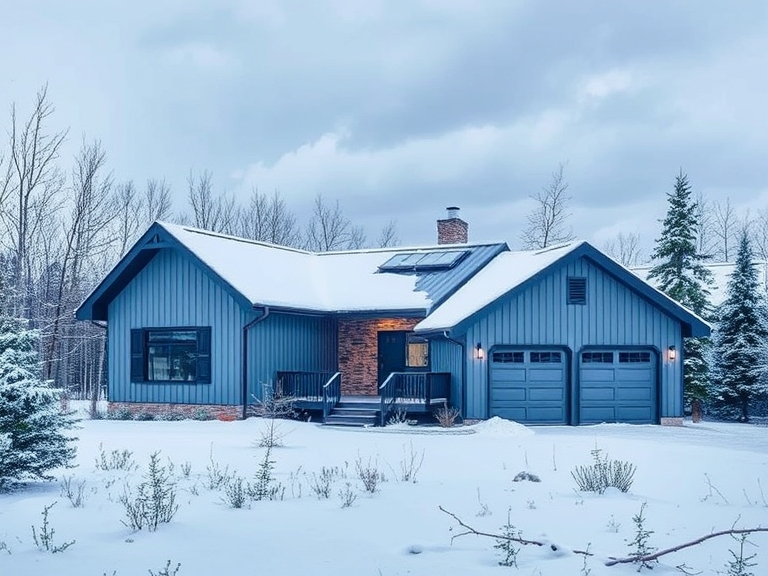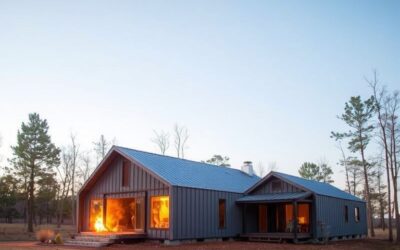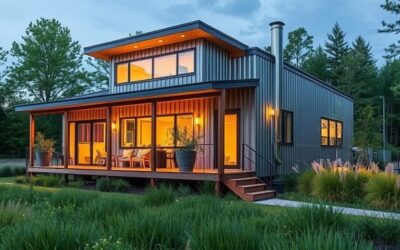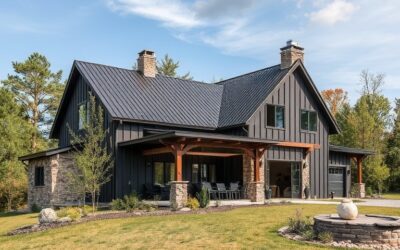Building a home that stands up to extreme weather is essential for your safety and comfort. Traditional building materials like wood and brick may look robust, but they often fall short when tested by harsh weather. That’s where all-steel homes come into play. Known for their remarkable resilience, these homes offer unparalleled protection against the elements.
Steel is not just a durable material; it’s an essential component for constructing homes designed to resist the unpredictable. From high winds and heavy snow to intense heat and corrosive environments, steel provides a reliable barrier that keeps your home secure. The strength of steel ensures that the structural integrity of your home remains intact even in the face of severe weather events. This is one of the many reasons homeowners are increasingly choosing all-steel construction for their new homes.
Additionally, the design flexibility of steel allows for enhanced features that further boost weather resilience. You can customize everything from the roof to the walls in ways that optimize protection against the elements. This means you can create a home that’s both beautiful and fortified against whatever nature throws at it. Let’s delve deeper into the specific aspects that make all-steel homes a top choice for weather resilience.
Understanding the Structural Strength of Steel
For structural strength, nothing beats steel. Unlike wood, which can warp, rot, or be eaten by termites, steel retains its strength and shape over time. This durability makes steel a superior choice for constructing homes that need to withstand various environmental stresses. Steel’s high tensile strength ensures that it can support heavy loads and resist forces that might compromise other materials.
The strength of steel is not just about enduring loads; it’s also about flexibility. Steel structures can bend under stress without breaking, which is crucial in areas prone to earthquakes or high winds. This flexibility means that your home can absorb and dissipate energy effectively, reducing the risk of catastrophic failure. Furthermore, steel’s resistance to warping and shrinking ensures that the structural integrity of your home remains uncompromised over its lifetime.
Steel vs. Traditional Materials in Extreme Weather
Common materials like wood and brick have clear weaknesses in extreme weather. Wood, for example, is susceptible to moisture, which can lead to mold, rot, and structural weakening. In contrast, steel is impervious to these issues, making it a far better option for homes in humid or wet climates. Moreover, steel does not attract pests like termites, which can cause significant damage to wooden structures.
Brick, while sturdy, can crack under extreme temperature changes or seismic activity. Steel, on the other hand, exhibits excellent performance in both scenarios. Steel can expand and contract without cracking, and its ability to flex makes it ideal for earthquake-prone areas. Additionally, steel’s non-combustible nature provides a critical advantage in fire-prone regions, offering an extra layer of safety that traditional materials cannot match.
By understanding these comparisons, it becomes clear that steel not only outperforms traditional materials in extreme weather but also offers a more reliable and long-lasting solution for home construction. This makes all-steel homes a smart choice for anyone looking to build a resilient and secure living space.
Design Features That Enhance Weather Resistance
Weather-resistant design features make all-steel homes even stronger against extreme conditions. One such feature is the incorporation of reinforced steel frames that provide additional support and stability. By using thicker steel and additional bracing, these homes become even more resilient against high winds and seismic activities. This structural reinforcement helps distribute the forces more evenly, preventing localized stress points that can lead to structural failure.
Another critical design element is the use of weather-resistant coatings and sealants. Applying specialized paint or galvanizing the steel can protect it from corrosion and rust, which are common problems in humid or coastal regions. Additionally, integrating advanced insulation techniques can help in maintaining a consistent interior temperature, thus making the home more energy-efficient and comfortable regardless of the external weather conditions. These design features collectively ensure that all-steel homes provide superior weather resilience.
Long-Term Benefits of Weather-Resilient Steel Homes
Investing in a weather-resilient steel home brings major long-term benefits, starting with lower maintenance costs. Unlike traditional homes that frequently need repairs or replacements due to weather-related damage, steel homes remain robust with minimal upkeep. This longevity translates into significant savings over the years, making it a cost-effective choice. Moreover, the durability of steel ensures that your home remains safe and habitable through various weather scenarios, providing peace of mind.
Another substantial benefit is the increased property value. Homes that are designed to withstand extreme weather conditions are highly desirable and can command higher resale prices. Buyers are willing to pay a premium for a home that promises long-term safety and reduced maintenance expenses. Additionally, the energy efficiency of steel homes, aided by superior insulation, contributes to lower utility bills, offering a financial advantage. All these factors make weather-resilient steel homes a smart investment for the future.
Conclusion
Weather resilience is essential when building or buying a home. All-steel homes offer unparalleled protection against extreme weather, thanks to their structural strength, superior design features, and long-term benefits. Steel’s ability to withstand high winds, seismic activities, and corrosive environments makes it an ideal choice for constructing durable and reliable homes. Furthermore, the incorporation of weather-resistant coatings and insulation techniques enhances the home’s resilience, ensuring it remains safe and comfortable in any weather condition.
The long-term benefits of investing in a weather-resilient steel home cannot be overstated. From reduced maintenance costs and increased property value to energy efficiency, steel homes provide a sound financial investment and peace of mind. If you’re considering building a new home or upgrading your existing one, look into the advantages of steel construction.
Explore the endless possibilities of all-steel homes with Wink Panels LLC. Contact us today to learn how we can help you create a durable, weather-resistant home tailored to your needs with steel wall panels. Your secure and comfortable future home awaits!




